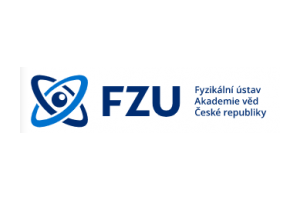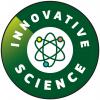Institute of Physics, Czech Academy of Sciences
-
0 comments

What is the innovation?
Energy and data-efficient neuromorphic-analog and ultra-fast information technology based on antiferromagnets.
What problem does the innovation solve?
Data is the oil fueling the 21st century economy. However, to cope with the exponential growth of data requires a radical change in the computing paradigm. The von Neumann architecture with separate logic and memory and synchronous circuitry makes the energy and data inefficiency of present digital IT unsustainable. This applies to the exceedingly power hungry cloud centers for data mining, as well as to edge devices for data generation and transmission which drain batteries at a rate inhibiting their deployment in large volumes. The inability to create a functional edge-to-cloud internet of things (IoT) ecosystem based on digital electronics, combined with reaching the scaling limits of CMOS devices and the end of the Moore’s law, resulted in 2016 in abandoning the International Technology Roadmap of Semiconductors. The search for a viable complement or successor IT technology is becoming of paramount importance.
How does the innovation solve the problem?
Our solution is neuromorphic-analog – neurolog IT. Following brain, memory and logic is integrated without von Neumann bottlenecks and neuromorphic machine-learning is implemented using analog asynchronous circuitry. Beyond the brain inspiration, our neurolog IT allows for information coding on the ultimate atomic and femtosecond scales, and for embedding topologically protected dissipation-less electronics. In a series of articles published in Science and Nature family journals, and accompanying patent applications, we have established that the completely overlooked but abundant family of antiferromagnets ticks all the above boxes of an enabling technology for the futuristic neurolog IT. The successful demonstrations of prototype antiferromagnetic devices also inspired our parallel development on the system level of a complete neurolog IT platform for energy efficient edge data generation and edge-to-cloud transmission.
Is there any other existing cutting edge solution? If so, how does yours differ?
Based on our five-year experience in the IoT business we verified that massive deployment of marketable edge-to-cloud IoT solutions is beyond the reach of the traditional energy/data hungry digital IT. The 2020 review by the EU innovation experts of our development of antiferromagnetic devices and of the neurolog IT system platform stated that our solution is unparalleled in conventional microelectronics, with disruptive impact on the current technology landscape. The report confirmed that the competition in the target market is patchy with no other major player.
Tell us about your team?
Our team of 20 members starts from theory experts covering the full scale from ab initio calculations of the underpinning material properties and physical phenomena to simulations on the neurolog IT device and system level. The theory ideas are transformed within the team into the synthesis of high quality antiferromagnetic materials. These are transferred to the device nano-fabrication facility, and subsequently tested by a broad range of experimental methods from microscopies to electrical and femtosecond laser measurements. The IoT and electronic applications group is then responsible for the full development chain starting from the design of the neurolog IT platform and interfacing it with a variety of sensors, to software development for edge-to-cloud transmission and deployment of data mining tools on the cloud. Finally, the business development manager on the team is in charge of realizing pilot demonstrations and for transforming the innovation into a viable business model.
How big is the market for this innovation?
The modular design of our neurolog IT system platform allows for both pilot testing of new devices in real life conditions and, with already established components, to provide marketable solutions. Through pilots we have verified the demand by research and development sector and by customers from public and private sectors. Among others, the projects include smart-city management of traffic and lighting, smart monitoring of water retention systems, geological or mining-related earthquake warning systems, health monitoring of civil infrastructures ranging from buildings to power plants, etc. As confirmed in the 2020 evaluation, our innovation can have disruptive impact on current digital IT and the related vast market. The compatibility, besides electronic circuitry, with the ultrafast laser optics has a potential to create new high-tech markets that do not exist today.

